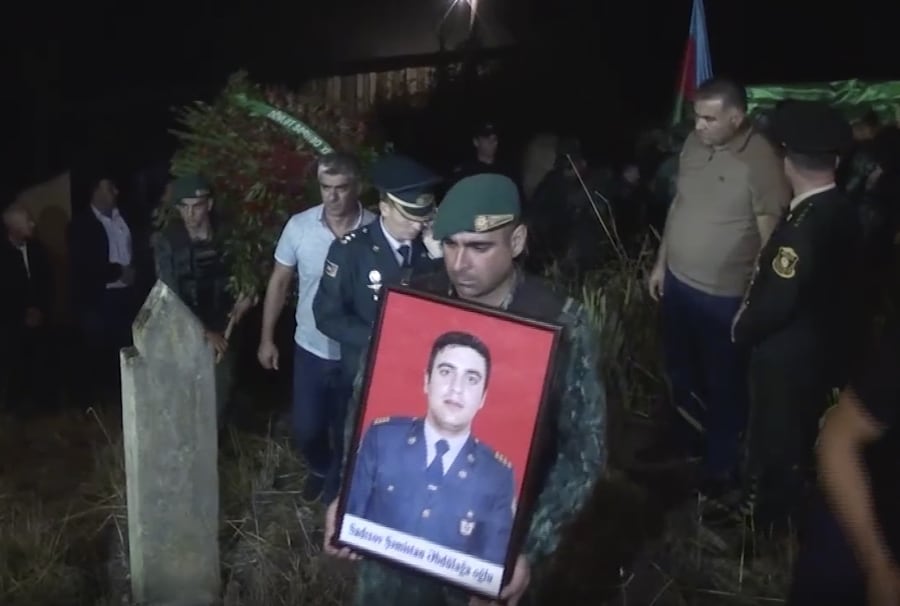Border clashes between Armenia and Azerbaijan have killed 155 troops on both sides in the largest outbreak of fighting between the neighbors and longtime adversaries in nearly two years, fueling fears of even bigger hostilities.
Here is a look at the decades-long conflict between the two countries, and the latest clashes.
Recommended Videos
WHAT'S IT ALL ABOUT?
Armenia and Azerbaijan have faced off for more than three decades in a conflict over the separatist Nagorno-Karabakh region.
The mountainous region is part of Azerbaijan, but has been under the control of ethnic Armenian forces backed by Armenia since a separatist war there ended in 1994.
The territory in the southern Caucasus covers an area of roughly 4,400 square kilometers (1,700 square miles), about the size of the U.S. state of Delaware.
During the Soviet era, the mostly Armenian-populated region had an autonomous status within Azerbaijan. Long-simmering tensions between Christian Armenians and mostly Muslim Azeris, fueled by memories of the 1915 massacre of 1.5 million Armenians by Muslim Ottoman Turks, boiled over as the Soviet Union frayed in its final years.
Fighting broke out in 1988 when the region made a bid to join Armenia, and after the 1991 Soviet collapse hostilities escalated into a full-blown war, killing an estimated 30,000 people and displacing about 1 million.
When the war ended with a cease-fire in 1994, Armenian forces not only held Nagorno-Karabakh itself but also broad areas outside the territory’s borders.
International mediation efforts over the following decades failed to achieve a diplomatic settlement.
THE 2020 WAR
On September 27, 2020, Azerbaijan launched an operation called “Iron Fist” to reclaim control over Nagorno-Karabakh.
NATO-member Turkey, which has close ethnic, cultural and historic bonds with Azerbaijan, offered it strong support.
In six weeks of fighting involving heavy artillery, rockets and drones that killed more than 6,700 people, Azeri troops drove Armenian forces out of areas they controlled outside the separatist region and also seized broad chunks of Nagorno-Karabakh proper.
A Russia-brokered peace deal on Nov. 10 allowed Azerbaijan to reclaim control of the areas occupied by Armenian forces outside Nagorno-Karabakh for nearly three decades, including the Lachin region, which holds the main road leading from Nagorno-Karabakh to Armenia. Armenian forces also agreed to surrender control over significant sections of Nagorno-Karabakh.
Russia has deployed about 2,000 troops to the region to serve as peacekeepers under the deal.
The agreement triggered years of protests in Armenia, where the opposition denounced it as a betrayal of the country's interests and called for the resignation of Prime Minister Nikol Pashinyan. Pashinyan has weathered the pressure, defending the deal as the only way to prevent Azerbaijan from seizing all of Nagorno-Karabakh.
AND THE NEW HOSTILITIES?
Sporadic clashes between Azeri and Armenian forces have repeatedly erupted in the area, but the fighting that began Tuesday was the most serious since the 2020 peace deal.
Both sides blamed each other for starting hostilities, with Armenia accusing Azerbaijan of an unprovoked attack and Baku saying it was responding to shelling by Armenian forces.
Armenia said at least 105 of its soldiers were killed, while Azerbaijan said it lost 50.
Russia moved quickly to help negotiate an end to hostilities, but a cease-fire it tried to broker has failed to hold and clashes have continued.
Late Tuesday, Russian President Vladimir Putin chaired a call with leaders of countries belonging to the Collective Security Treaty Organization, a Moscow-dominated grouping of several ex-Soviet nations that includes Armenia. The leaders agreed to send a fact-finding mission including top officials from the grouping to the conflict area.




